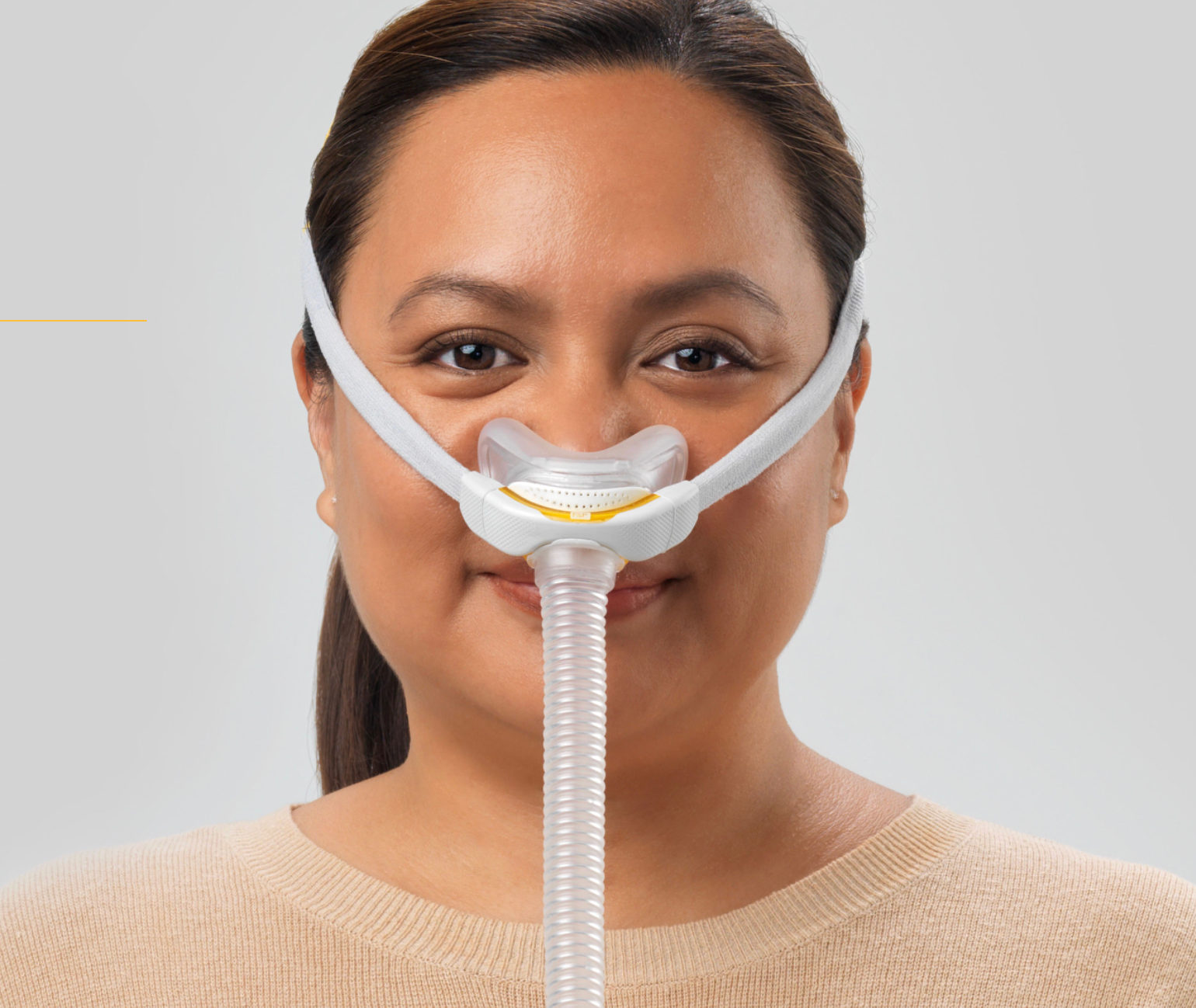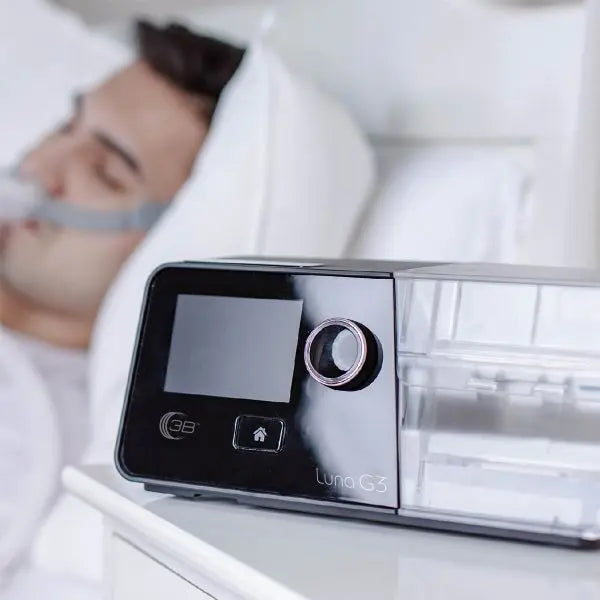The Connection Between OSA and Joint Replacement Risks
Introduction: The Connection Between OSA and Joint Replacement Risks
Obstructive Sleep Apnea (OSA) is a condition characterized by repeated episodes of airway obstruction during sleep, leading to disrupted breathing and poor oxygenation. OSA is prevalent in patients undergoing orthopedic surgeries like hip and knee replacements, often contributing to significant postoperative complications.
These surgeries are already associated with risks such as blood clots, infections, respiratory issues, and extended hospital stays. When patients with untreated OSA undergo hip or knee replacement surgery, these risks increase exponentially due to fluctuations in oxygen levels, higher stress on the cardiovascular system, and a greater chance of respiratory depression during anesthesia.
Fortunately, CPAP therapy—a non-invasive treatment that delivers a continuous stream of air to keep the airway open—has been shown to reduce these complications, improve recovery times, and enhance overall surgical outcomes.
How OSA Complicates Hip and Knee Replacement Surgery
OSA patients face several challenges during and after joint replacement surgeries. Some key issues include:
-
Anesthesia and Airway Management:
Administering anesthesia to patients with OSA presents challenges. Anesthetics can relax the muscles controlling the airway, increasing the risk of airway obstruction during surgery. -
Postoperative Respiratory Depression:
Opioid pain management after surgery can worsen respiratory function, leading to hypoxia (low oxygen levels). For OSA patients, this can trigger life-threatening complications. -
Increased Risk of Cardiovascular Events:
OSA contributes to hypertension and atrial fibrillation, heightening the risk of blood clots, heart attacks, and strokes after surgery. -
Higher Rates of Infections and Readmissions:
Studies show that patients with untreated OSA are more likely to experience infections and require hospital readmissions. Poor oxygenation impairs wound healing, which can delay recovery.
The Role of CPAP in Reducing Post-Surgical Risks
Using CPAP before and after surgery has been shown to mitigate many of these risks. Here’s how CPAP makes a difference:
-
Improved Oxygenation and Reduced Hypoxia:
CPAP ensures consistent oxygen delivery by preventing airway obstruction, reducing the likelihood of respiratory depression during surgery and recovery. -
Better Cardiovascular Stability:
CPAP therapy reduces nocturnal blood pressure surges and stabilizes heart rhythms, decreasing the risk of postoperative heart attacks or strokes. -
Faster Recovery and Reduced Infections:
Proper oxygenation promotes wound healing, reducing the risk of infections. Patients using CPAP are less likely to experience complications requiring hospital readmission. -
Reduced Opioid Use:
CPAP users experience better sleep quality and pain management, which can minimize the need for high-dose opioids post-surgery, further decreasing respiratory risks.
Case Studies and Research Supporting CPAP Use in Joint Surgery
Several studies highlight the importance of CPAP compliance for joint replacement patients with OSA. A study published in The Journal of Arthroplasty reported that patients with OSA who used CPAP had fewer postoperative complications and shorter hospital stays compared to those who did not use CPAP.
Additionally, a retrospective analysis in Anesthesiology found that patients using CPAP were 40% less likely to develop respiratory complications following knee replacement surgeries. Similar trends were observed in hip replacement patients, demonstrating the effectiveness of CPAP in reducing adverse outcomes across multiple types of surgeries.
Pre-Surgical Preparation: CPAP Compliance Is Key
To maximize the benefits of CPAP during joint replacement surgery, pre-surgical preparation is essential. Here are some best practices:
- Assess CPAP Compliance: Ensure the patient has been using CPAP consistently before surgery. Many healthcare providers recommend at least four hours of nightly use to reduce risks.
- Sleep Study and Machine Calibration: If a patient is newly diagnosed with OSA, a sleep study and proper CPAP titration are critical before surgery.
- Bring the CPAP to the Hospital: Patients should bring their CPAP machines to the hospital, as continuous therapy is often required immediately after surgery.
- Coordinate with the Medical Team: Anesthesiologists, respiratory therapists, and orthopedic surgeons must collaborate to ensure CPAP therapy is integrated into the postoperative care plan.
Challenges and Solutions: Overcoming CPAP Non-Compliance
Despite its benefits, CPAP therapy faces challenges with patient compliance. Some individuals find it uncomfortable to use or difficult to adjust to the air pressure settings. Here are solutions to address common issues:
- Education and Support: Providing education on the benefits of CPAP therapy and offering troubleshooting support can encourage compliance.
- Switching to Alternative Masks: If a patient struggles with traditional CPAP masks, alternatives like nasal pillows or full-face masks may offer better comfort.
- Automated Adjustments: CPAP machines with auto-titrating features can adjust air pressure in real-time, making therapy more comfortable and effective.
- Peer Support: Joining a support group or forum can help patients stay motivated and address challenges in using CPAP consistently.
Conclusion: The Lifesaving Potential of CPAP in Joint Surgery
For patients with OSA undergoing hip or knee replacement surgery, CPAP therapy plays a crucial role in reducing risks and improving recovery outcomes. With proper pre-surgical preparation and consistent CPAP use, patients can minimize respiratory issues, avoid cardiovascular complications, and experience faster healing.
Healthcare providers must emphasize the importance of CPAP compliance and ensure coordination across medical teams to integrate this therapy into the surgical care plan. As research continues to validate the positive impact of CPAP on surgical outcomes, it is clear that this simple yet effective therapy has lifesaving potential for patients with OSA.
Bibliography
- Seet, Edmond, et al. "Preoperative Use of CPAP Reduces Respiratory Complications in Patients with OSA Undergoing Joint Replacement Surgery." Journal of Arthroplasty (2020).
- Chung, Frances, et al. "OSA and Perioperative Outcomes: An Updated Review of the Evidence." Anesthesiology(2018).
- Finkel, Karl J., et al. "CPAP Use in Patients Undergoing Hip Replacement Surgery Reduces the Risk of Complications." American Journal of Orthopedics (2021).








Leave a comment
This site is protected by hCaptcha and the hCaptcha Privacy Policy and Terms of Service apply.